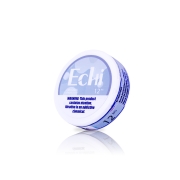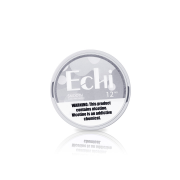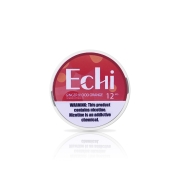Snus vs. Nicotine Pouches: A B2B Buyer’s Guide to Key Differences and Strategic Opportunities
As smokeless nicotine alternatives continue to gain global traction, two product categories have emerged as dominant forces in the market: snus and nicotine pouches. While both are designed for oral nicotine delivery, their differences in formulation, production, regulatory classification, and consumer appeal are critical for brands, manufacturers, and distributors to understand.
In this comprehensive guide, we break down the core distinctions between snus and nicotine pouches—offering B2B stakeholders the clarity needed to make informed decisions about product development, procurement, and market positioning.
Product Category: Comparative Analysis
This article serves as a detailed comparative guide, focusing on technical, regulatory, and commercial aspects of snus and nicotine pouches. The tone is precise and professional, intended for B2B readers who value depth without excessive jargon.
1. What Are Snus and Nicotine Pouches?
Understanding each product begins with a clear definition of their composition and function within the nicotine category.
Snus: Traditional, Tobacco-Based
Snus is a moist, smokeless tobacco product originating from Sweden and Norway. It consists of finely ground tobacco combined with water, salt, and flavorings. Packaged in small pouches or loose form, snus is placed under the upper lip, where nicotine is absorbed through the oral mucosa. Unlike chewing tobacco, snus does not require spitting and has a long-standing consumer base in Northern Europe.
Nicotine Pouches: Modern, Tobacco-Free
Nicotine pouches are a newer innovation. They contain purified nicotine—either extracted from tobacco plants or synthesized in a lab—combined with food-grade fillers, flavor agents, and stabilizers. These dry, odorless pouches offer a cleaner and often more discreet experience, making them especially attractive to new, health-conscious consumers and markets with strict tobacco regulations.
2. Manufacturing Processes: From Raw Materials to Market
Understanding how these products are made can shed light on cost structures, compliance needs, and scalability.
Snus Manufacturing
-
Raw Material: Utilizes ground tobacco leaves.
-
Pasteurization: Heated to eliminate bacteria and reduce harmful compounds.
-
Blending: Mixed with water, salt, and flavorings; preservatives may be added.
-
Packaging: Sealed into moist pouches or left loose.
Snus production is labor-intensive and subject to strict tobacco regulations, especially in non-Nordic regions.
Nicotine Pouch Manufacturing
-
Nicotine Source: Either tobacco-derived or fully synthetic.
-
Formulation: Combined with cellulose, sweeteners, and food-grade additives.
-
Assembly: Dosed into dry pouches for oral use.
Tobacco-free status allows nicotine pouches to bypass many of the legal barriers snus faces, simplifying international distribution.
For equipment sourcing and OEM partnerships, manufacturers like SnuffFactory offer valuable expertise in both product lines.
3. Comparative Breakdown: Composition and Features
| Aspect | Snus | Nicotine Pouches |
|---|---|---|
| Main Ingredient | Ground tobacco | Purified/synthetic nicotine |
| Moisture Content | Moist | Dry |
| Flavor Variety | Limited, traditional | Extensive, modern and flavored |
| Additives | Salt, water, preservatives | Fillers, sweeteners, stabilizers |
| Consumer Perception | Traditional, tobacco-associated | Clean, modern, tobacco-free |
4. Advantages and Disadvantages
Each product comes with distinct strengths and limitations based on consumer preference and regulatory environments.
Snus: Pros
-
Full-bodied Flavor: Offers a more robust, tobacco-forward taste.
-
Cultural Legacy: Strong market presence in Nordic countries.
-
Nicotine Release: Moist structure enhances bioavailability.
Snus: Cons
-
Regulatory Restrictions: Banned or tightly regulated in several regions.
-
Perception Issues: Linked with traditional tobacco stigma.
-
Limited Innovation: Flavor and format choices are often narrower.
Nicotine Pouches: Pros
-
Tobacco-Free Appeal: Aligns with public health trends and modern consumer demands.
-
Flavor Diversity: Wide array of options enhances personalization and repeat purchases.
-
Shelf Stability: Dry format is easier to store, ship, and handle.
Nicotine Pouches: Cons
-
Synthetic Skepticism: Some consumers may question the purity or authenticity.
-
Milder Flavor: Lacks the depth tobacco offers, which may not satisfy all users.
5. Market Positioning and Target Demographics
Understanding who buys what—and why—can sharpen your brand’s go-to-market strategy.
Snus
-
Best suited for long-time tobacco users.
-
Performs strongly in Nordic markets, where it enjoys cultural legitimacy.
-
Ideal for heritage brands or traditional product lines.
Nicotine Pouches
-
Appeals to younger, health-conscious consumers.
-
High growth in markets with tobacco bans or flavor-forward demand (e.g., U.S., Germany, UK).
-
Excellent fit for brands focused on innovation, flavor customization, and clean labeling.
6. Frequently Asked Questions
Q: Are nicotine pouches safer than snus?
Nicotine pouches may pose fewer health risks due to the absence of tobacco, but they still contain nicotine—a potentially addictive substance. Long-term safety data is still evolving.
Q: Can I market both products under one brand?
Yes, but marketing strategies should differentiate clearly—position snus as a traditional choice, and nicotine pouches as a modern, lifestyle-focused alternative.
Q: What are the key regulatory differences?
Snus is classified as a tobacco product and is often heavily restricted or banned. Nicotine pouches are more widely accepted but may still be subject to regulations on packaging, nicotine content, and flavor use.
Q: Where can I source reliable snus and nicotine pouch products?
Suppliers like SnuffFactory offer bulk solutions and private-label options tailored for both product types. Explore their contact page to discuss B2B customization.
7. Final Takeaway: Which Product Fits Your Business Goals?
While snus and nicotine pouches may appear similar at first glance, their distinctions carry real implications for your business. Snus offers a heritage-rich, tobacco-based experience for mature markets, while nicotine pouches open doors to modern, global audiences seeking cleaner alternatives.
For brands, wholesalers, and importers, the right choice depends on:
-
Regulatory frameworks in target markets.
-
Brand identity and customer demographics.
-
Operational capacity to manage production, compliance, and distribution.
With support from experienced OEM partners like SnuffFactory, you can confidently select and scale the right product line—backed by technical know-how and market insight.
Whether you’re launching a new nicotine portfolio or diversifying your current offerings, knowing the differences between snus and nicotine pouches gives your business a competitive edge in a fast-changing landscape.









Leave a Reply
Want to join the discussion?Feel free to contribute!